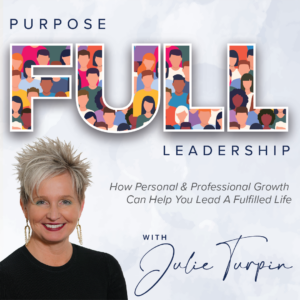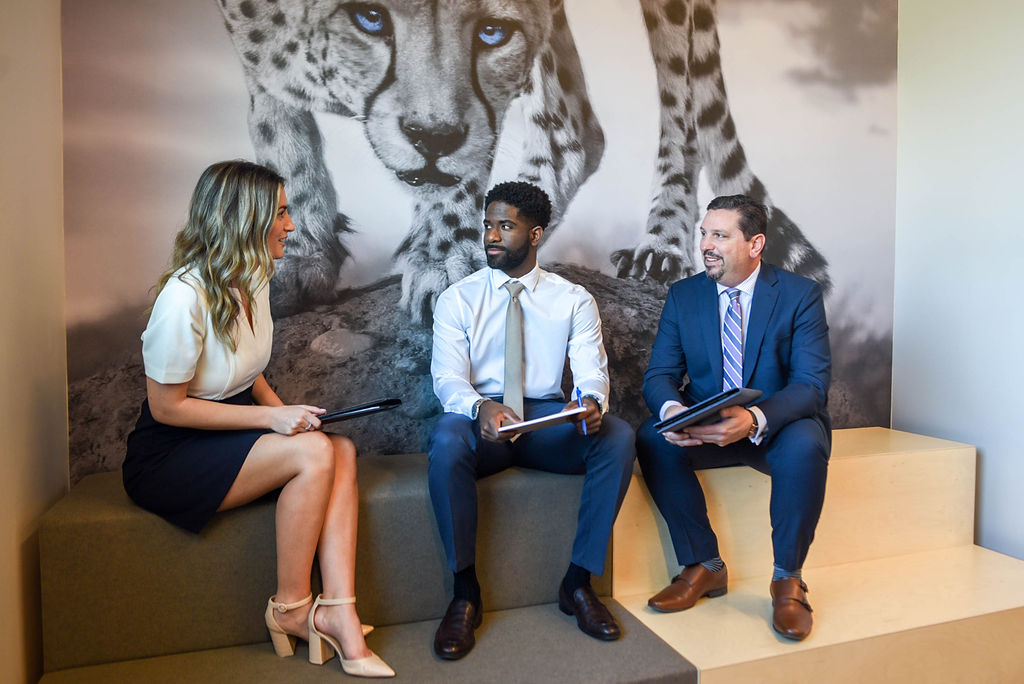Do You Have What It Takes to Be a Leader in 2023?
by Julie Turpin, Chief People Officer at Brown & Brown Insurance
(Pictured above: Julie speaking at Brown & Brown’s annual Coalition event, where leaders and teammates from across the business grow and celebrate shared success.)
The expectations for human resources (HR) leaders are changing — and the next generation will need to broaden their experiences beyond HR to stand out.
Before the pandemic, 60% of CEOs said their organizations considered HR to be an “administrative” asset versus a holistic value driver[1], and today, the same percentage is rethinking the HR function for their company.[2]
The pandemic highlighted the need for HR leaders to strategically shepherd people and organizations through disruption, whether on a global, unprecedented scale like what we’ve all recently experienced or on a more day-to-day basis as the company strives for its strategic business objectives.
This new expectation of being a “broad-gauge business executive”[2] rather than specialized might appear daunting for up-and-coming talent, especially when we compare it to the 81% of current S&P 500 Chief Human Resources Officers (CHROs) who have primarily worked in the HR function for the majority of their careers.[3] But we are meant to outgrow our mentors and forge our own paths.
I am lucky enough to have an operational background, which allowed me to see the various facets of the business and gain the same experiences as many of the people I now support today. When I first joined Brown & Brown, I worked on the ground floor of one of our businesses for a few years, so I know what it feels like to have an enterprise project dropped on my lap and the effort it takes to get that project across the finish line at the local/regional level. Today, as Chief People Officer, I now get to create programs with these experiences in mind for the people currently in my former role.
For example, when we designed our return to workplace policy during the pandemic, we created a guide for the operations of our offices. We provided a checklist and simple-to-execute steps that specifically addressed how leaders, who are responsible for so much on a daily basis, could roll out the initiative to their teams.
It is not simple — the HR leader’s role is significant and growing. But the world needs more compassionate and well-rounded leaders. Are you ready to step up to the plate?
Leaders build leaders
Skills expansion and the talent gap are the latest obsession for companies worldwide, with 87% of companies reporting either an existing or expected skills gap within the next few years and 77% reporting difficulty filling roles.[4]
While the focus has been on upcoming talent and lower-level positions needing to upskill their technical capabilities, I see our biggest challenge as a lack of leadership training.
Leadership is a different skill set than being an individual contributor, and many organizations today need to build opportunities for their mid-level talent to grow these skills. Leaders: It is our job to step up to fill this gap. Here’s how we can help transform upcoming talent into future leaders:
1. Understand your people. Understanding your people means understanding the work they do, the challenges they face and providing the resources that will make their jobs easier. Company culture is also taking the front stage today, and building an environment where people feel they belong and thrive starts with understanding who they are and what they need. When you design workforce programs to directly and positively impact the employee experience, you create something more meaningful to the organization and build credibility among your workforce.
2. Understand the business. I encourage my team to look for opportunities to get a new perspective of the business any chance they can. It could be sitting on a sales or renewal call or listening in on a team meeting. For an HR leader, this understanding can increase the ability to participate in business decisions, especially when combined with an understanding of talent; this trick also applies to units outside of HR. Any team member can expand their knowledge, skills and influence by learning about a different part of the business.
3. Stay in tune with the external workforce market. When you combine your knowledge of the business and its people with global workforce trends, you hit the sweet spot for driving value. Over the last couple of years, this has played out in the remote versus office versus hybrid conversation and how organizations can keep employees engaged after a change in workforce priorities. We can also see its impact in upskilling and identifying new technologies (i.e., artificial intelligence) or skills that propel workers in a changing market. True leaders are one step ahead, anticipating and/or doing their due diligence to understand what their teams need and how they can deliver on those needs. No one has a crystal ball, but we can put in the effort.
4. No more training for training’s sake. Adults learn through experience and practice. Our mastery fades or never develops if we don’t use a particular skill. Let’s move on from training for training’s sake and the check-the-box culture that sees organizations offering specific training to the wrong teams at the wrong time. Leadership skills, in particular, such as executive presence, strategic thinking, and how to goal plan and show up for your teams, must be practiced and honed. I recommend the just-in-time training approach, which delivers the training to the leadership when they will use it.
Learning and growing as a leader does not stop once you reach the top. Your business and workforce will always be changing and evolving, and so must we. We owe it to ourselves to constantly be looking for growth opportunities, and we owe it to our teams to help them develop (or add to their backpacks of wisdom).
We should never be afraid or embarrassed of our own areas for improvement. Instead, I challenge us all to be vulnerable in these situations, open to the challenge, and be ready to roll up our sleeves and dive in!
[1] KPMG “The Future of HR in the New Reality,” 2020.
[2] Gartner “Model of a World-Class CHRO,” Accessed August 28, 2023.
[3] HR Leaders Monthly “What It Takes to Be a Strategic CHRO in Today’s Business Environment,” May 2023.
[4] ManpowerGroup “The Talent Shortage,” 2023.

PurposeFULL Leadership
How Personal & Professional Growth Can Help You Lead A Fullfilled Life
by Julie Turpin, Chief People Officer at Brown & Brown Insurance
Subscribe to Julie’s PurposeFULL Leadership and view this blog on LinkedIn here.








